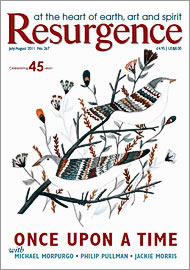These two books go together. One consists of a series of photographs John Woodman took of a particular view of the pond in Ruskin Park, South London, in different weathers, seasons, times, winds and lights. This is the pond that used to belong to the house at 163 Denmark Hill occupied from 1847 to 1872 by the great Victorian art critic, social visionary and artist John Ruskin, an inspirational figure – perhaps the inspirational figure – for Tolstoy, Gandhi and Proust, among many others. The other book is a selection of extracts from Ruskin’s Of Truth of Water (from Volume I of Modern Painters), preceded by specially commissioned essays.
Both works prompt reflection on the nature of water, not as H2O, a scientific compound, but as an essential element of all life and spirit, and also on the profound mystery and challenge of how to convey that element and its life and spirit in art. Of Truth of Water’s first paragraph ends with one of Ruskin’s simplest but most wonderful sentences: “It is like trying to paint a soul.”
Ruskin was enchanted, inspired, obsessed by water all his life. When he came to settle in the Lake District, he bought one of the most beautifully sited houses in England, Brantwood on Coniston Water, and loved to lie in a boat on the lake, gazing at the sky. Much earlier he had written of water’s amazing variety and changeableness, its power in making and remaking the landscape, its symbolic force as emblem of unwearied and unconquerable power: “What shall we compare to this mighty, this universal element, for glory and for beauty?”
As a young man Ruskin was much drawn to mighty waterfalls and storm scenes, and found in Turner the only artist who could begin to convey such effects in paint. With youthful intransigence, he dismissed practically all earlier attempts to paint water, reserving particular scorn for the widely admired Dutch sea painter van de Velde and for Canaletto’s monotonous and artificial rendering of ripples on the canals of Venice.
Given Ruskin’s unstinting admiration for and championing of Turner and his sublime effects, you might at first be rather surprised at the quietness and modesty of Woodman’s photographs. He chooses deliberately to narrow the frame; and by restricting his view to the same patch of an urban pond to focus on the interaction of water and light, he demonstrates that the way water both reflects and is transparent, and the way that what it reflects and does not reflect are never quite the same. But he is being faithful to one aspect of Ruskin here: the young art critic’s extraordinary, painstaking attention to what he called the ‘changefulness’ of water in light.
In Woodman’s photographs the colour of the pond water changes from red-brown to deep blue; the surface, from the stillness of a mirror to the metallic wave of ripples and the lumpy, frozen rigidity of ice; what is reflected varies from practically nothing to the intricate detail of trees.
To really appreciate these photographs, as also to read Ruskin’s prose, you need to be prepared to slow down and partake in the minute attention to detail; but the rewards are great.
In the end, it seems appropriate and touching that Woodman has chosen to photograph a humble urban pond rather than a magnificent lake or waterfall. As Ruskin grew older, he turned increasingly from aesthetics to ethics, or to the connections between the two: his work became, in part, a protest against what industrialisation was doing to humanity and to Nature: turning workers into mindless extensions of machines, and rivers and seas into sewers.
As Howard Hull reminds us in the finest of the gathered essays, Ruskin in later life endowed a fund, in memory of his mother, to restore and purify a spring of water between Epsom and Croydon. The tablet he erected at the spot reads thus: “In obedience to the Giver of Life, of the brooks and fruits that feed it, of the peace that ends it, may this Well be kept sacred for the service of men, flocks and flowers.” As a sobering afterthought, Hull reminds us that “the project failed. Its challenge has not gone away.”







